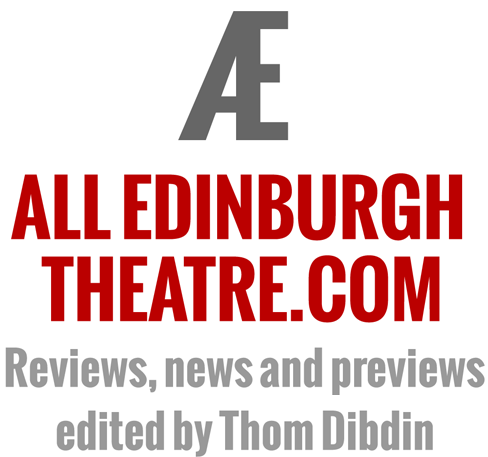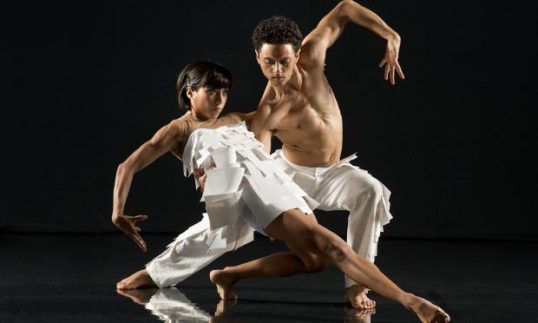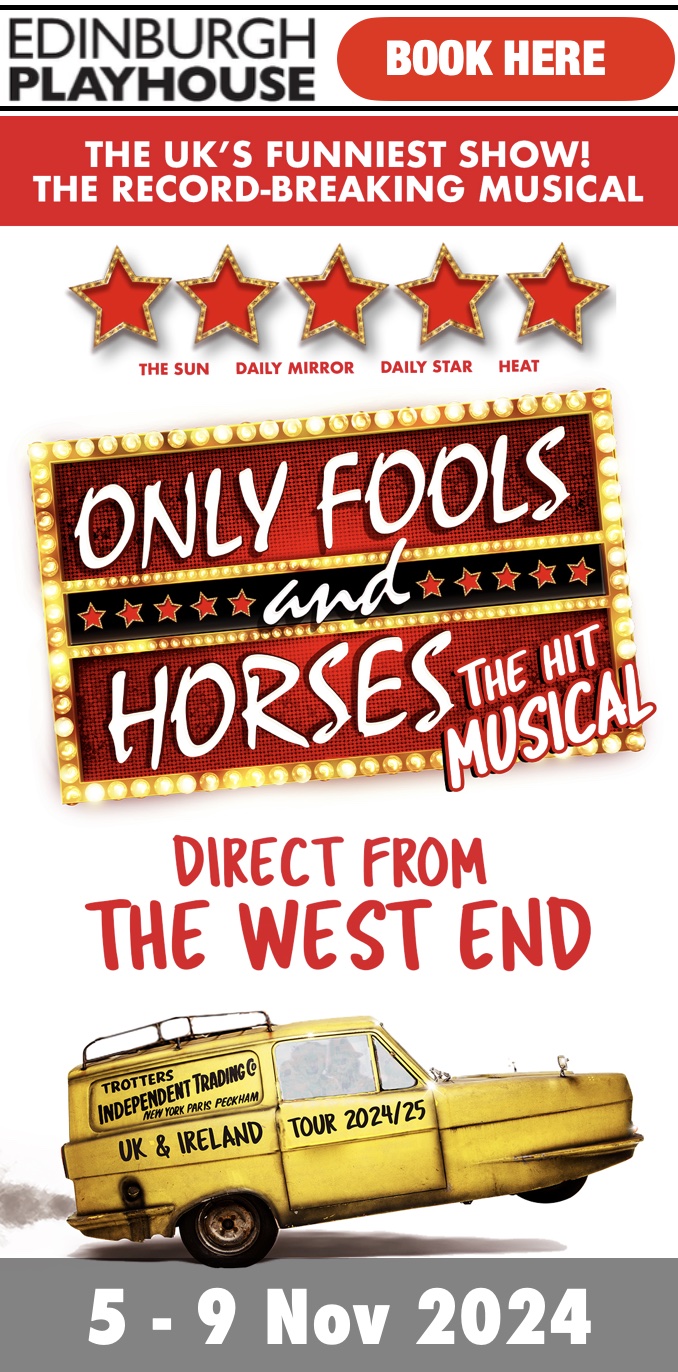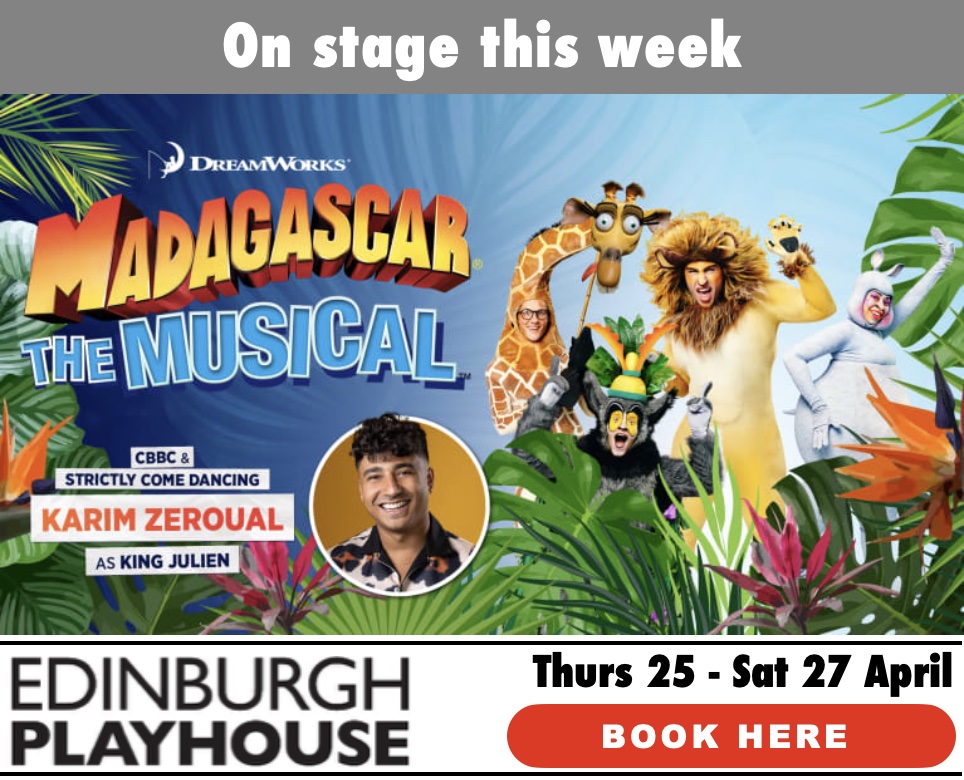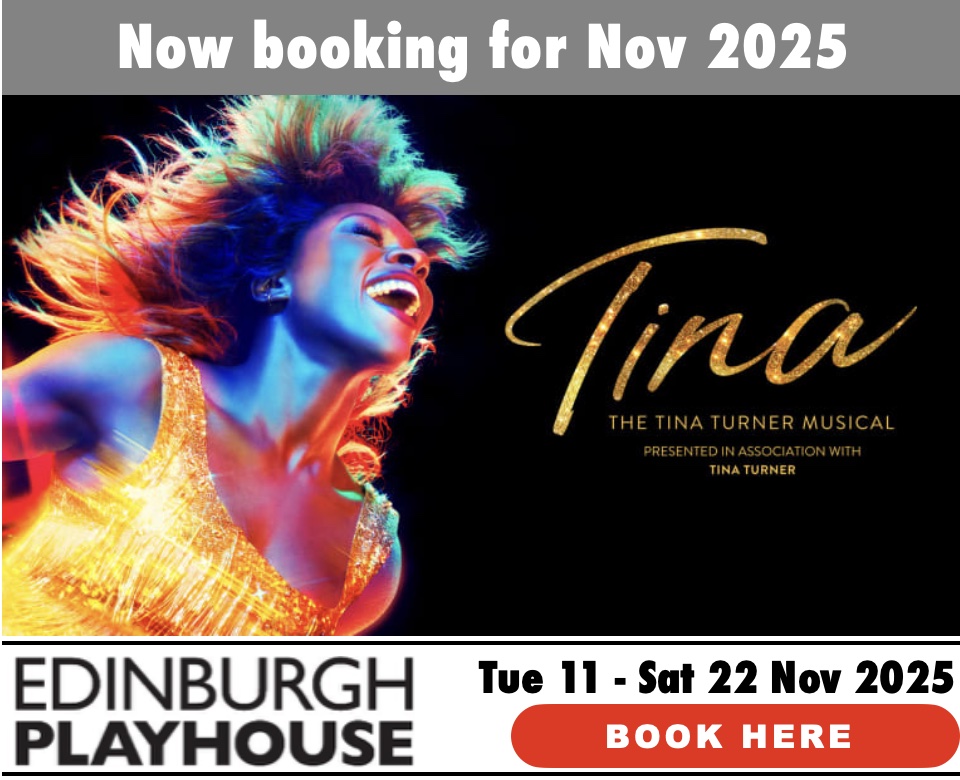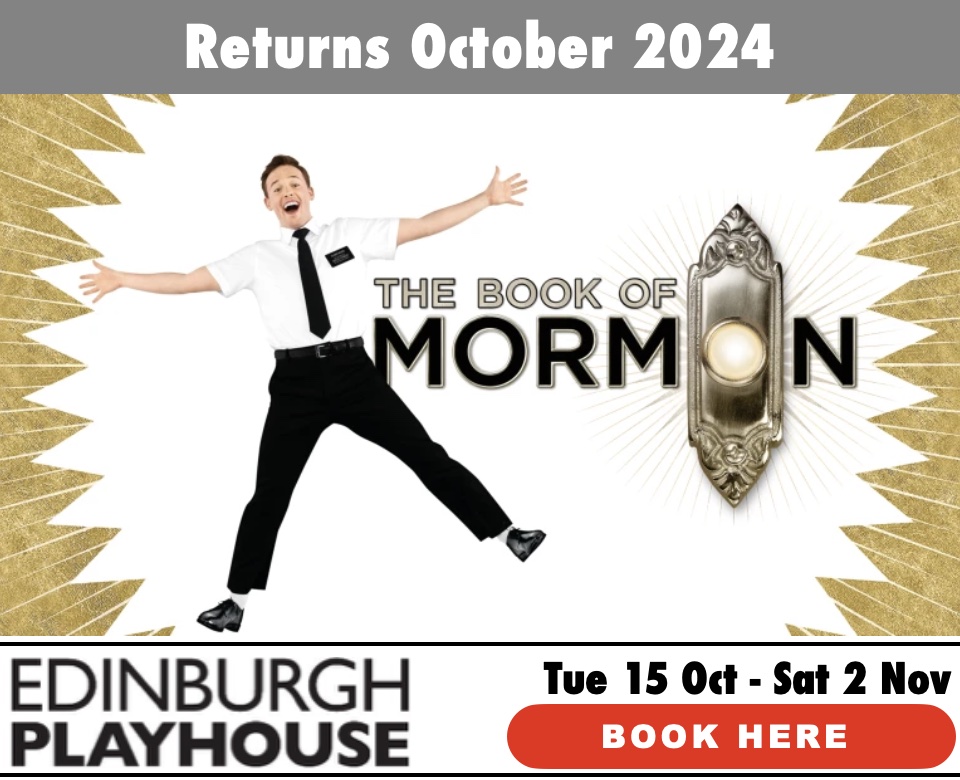Review – Rambert’s Labyrinth of Love
✭✭✭✩✩ Passion on a plate
Festival Theatre
Tue 9 – Wed 10 April 2013
Review by Thom Dibdin
Honed to the point of easy articulation, Rambert Dance Company’s Labyrinth of Love arrives in town for the final two nights of a tour which began last year.
If Edinburgh audiences don’t get the thrill of a world premier night – that happened in October – they benefit from a company which knows its repertoire inside out, so is smooth in its delivery and confident in its approach.
And it is straight into the title piece, without pause for introduction or settling down. Marguerite Donlon has created a dark and richly exotic examination of love in many of its manifestations, danced to a septet of poems and writings about love, set by Michael Dougherty to a score for solo soprano and orchestra.
It is all lovely to witness.
Vocal soloist Sarah Gabriel – wearing what Mary Quant might have designed if she had been asked to create a floor-length wedding meringue – is on stage throughout, a stately figure gliding around and interacting with the dancers – even interweaving her own moves with theirs at one point.
Designer Conor Murphy extends his Quant impression to the ensemble – once they have moved away from pure-white trunks of the opening sections. A mirrored black floor allow him to make some wonderfully shimmering visual effects.
Donlon’s tangling, writhing dance vocabulary provides a constant visual surprise. A raised plinth along the back of the stage – darkly mirrored like the floor – allow her to create some quirky surprises with dancers popping up from behind it or walk sedately along its top.
And yet, for all its joyous nature and skilful performance – although even here there is not always the precision you might expect from Rambert – there is not a lot left to linger afterwards.
The poetry is inaudible except for at a few lines – “being a bastard love” drips out at one point, at another “Liz and Richard, the most talked about…”.
If you haven’t read the accompanying sheet of poetry and prose used in the piece before it started, it is questionable whether you would feel the need to do so afterwards. And even if you had, it is hard to find a real correlation between the words of Sappho, Elizabeth Barrett Browning, Emily Dickinson or Elizabeth Taylor and what is being performed onstage.
A gorgeous 40 minutes to spend bathing in the beauty of a spectacle, but despite the appearance of a snake menacingly gliding through fire in Mat Collishaw’s projections, it lacks an edge. I’d happily watch it through again, but it promises rather more depth then it delivers.
A cynical, eyebrow-raising piece

Paul Taylor’s Roses
The second dance of the evening, a reconstruction of Paul Taylor’s Roses, is danced to a lush, light piece of Wagner.
Five couples dance increasingly sensual versions and variations of a similar theme. A circle motif is created both within each couple and between them, and as each couple dances their own little duet, the others sit apart: there, but not there.
This, it feels, is the representation of a relationship as it burgeons towards marriage. The couplings and combinations between the men in their drab, grey outfits and the women in their long floor-length dresses, have a passion – but also an element of distant ritual.
But as the Wagner comes to an end , instead of an ending, a sixth couple join the five. Dressed in white where there was black, their new couple’s variations are now danced to Heinrich Baermann’s Adagio for Clarinet and Strings. And suddenly it is as if the fire had gone. There is more smooth familiarity but as the soaring, sighing, diving clarinet line progresses, it feels as if something had been lost. It is a cynical, eyebrow-raising piece that hides rather more than it reveals.
Just to prove that they can do mechanical love as well as the next company, the evening finishes with the weird counterpoint between Richard Alston’s Dutiful Ducks snd Merce Cunningham’s Sounddance.
Dutiful Ducks sees Dane Hurst perform solo to Charles Amirkhanian’s text sound piece. The text is the title, more-or-less, and the movements are of ducks waddling and defecating across a lawn. It’s a rapid, precise and utterly mesmerising surprise.
For the finale, Cunningham turns to James Joyce and Finnegan’s Wake for inspiration: “In the beginning is the woid, in the muddle is the sound-dance, and therinofter you’re in the unbewised again…”
And under this exacting microscope Cunningham picks up the movements of insects to a score which is the scratching of wings across chitinous legs, distorted and amplified through the electronic machines of David Tudor.
Here, should you wish it, is the edginess that is missing from Donlon’s piece. The couplings are quite obvious though: brutal, ambivalent and obvious, as insects beetle, and leap around the stage, a birling mass of bugs and gawky, strange movements. This is alien sex, a found world observed, which has little meaning but provides an enthralling picture.
Running time 2 hours 30 mins.
Run ends Wednesday 10 April 2013.
Tickets and details on Festival Theatre website: http://www.edtheatres.com/rambert13
ENDS


